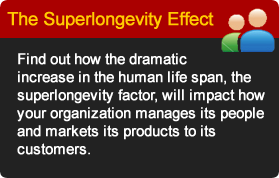The Expansionary Times
The Examiner
China at nuclear energy cutting edge with floating power plants
China at nuclear energy cutting edge with floating power plants
February 13, 2016
For Xi Jinping energy development is major China economic goal
Photo by Richard Stonehouse/Getty Images
While the US nuclear power industry stagnates, China is moving full speed ahead with its plans to expand its nuclear power presence by developing floating nuclear power stations which could sail to an oil rig, artificial island or any other site, anchor near that location and supply it with energy.
China Atomic Energy Authority chairman Xu Dazhe says that China, which is looking to double its atomic capacity by 2020, is planning to have these "marine floating power stations" operational within a few years.
Two marine nuclear power plants will be built by China National Nuclear Corporation (CNNC) and China General Nuclear Power Corporation (CGN). The CNNC plant plant should be up and running by 2019 and the CGN plant by 2020.
These floating power plants would provide a tremendous boost to China's goal of becoming a net energy exporter. At present China operates 30 nuclear reactors. It plans on adding another 24 reactors which would nearly double its nuclear power output. According to one of its recent
Five-Year Plans, China will have 110 reactors in operation by 2050, an expansion that will cost the country around $1 trillion.
Some site safety concerns about China's plans to mount nuclear power plants on marine vehicles and shuttle them across bodies of water. However, others point out that nuclear-powered aircraft carriers and missile submarines have been operating around the globe for decades.
China is intent on building floating nuclear power plants for a number of reasons. For one, in theory China could export power by simply moving one of these marine vehicles to any country's coastal city or town and begin to serve as its power source. Such floating plants could become a major revenue driver for this emerging global power.
Also, China has shown much interest in expanding its global reach in a novel way, not by conquering foreign lands but by simply building islands in areas it covets. Floating nuclear power plants would serve as an immediate source of portable energy that would make these artificial islands a permanent fixture wherever they are constructed. In theory, China could just sail a floating nuclear power plant to an artificial island, drop anchor, and become this island's permanent source of electricity generation.
China will be competing with Russia, whose Akademik Lomonosovfloating nuclear power plant is supposedly ready for deployment this October. Russian Deputy Prime Minister Dmitry Rogozin says this floating plant could produce up to 70 megawatts of electricity, and will serve as an energy source for and oil and gas drilling rigs and refineries and possibly cities and could be an asset in Arctic exploration.
Meanwhile, US nuclear plant construction has stagnated for decades. weighed down by a combination of cost overruns, bureaucratic quagmire, and environmental politics. The last American reactor,Tennessee's Watts Bar nuclear structure, came on line in 1996, 23 years after the construction process began. A second nuclear power plant at Watts Bar is slotted to come on line in late-2016, the first nuclear power plant constructed in the US in the 21st century.
China, Russia and the rest of the world seem quite content to watch the slow decline of the US nuclear industry as these countries participate in a worldwide nuclear power renaissance. Only time will tell if the US economy becomes less globally competitive as a result.
New hacked documents reveal DNC financial reports, donors' personal data
New hacked documents reveal DNC financial reports, donors' personal data
June 19, 201612:45 PM MST
Schultz dealing with firestorm over hacked DNC financial data
Photo by Andrew Burton/Getty Images
Guccifer 2.0, the supposed lone-wolf hacker of the Democratic National Committee's computer data bases, has just released party financial reports and personal data of campaign donors.
AndGuccifer 2.0 says there is much more to come.
Originally Debbie Wasserman Schultz, DNC chairperson, assured the media that only campaign strategy information was hacked, not sensitive personal data.
"Not so," says Guccifer 2.0, who takes his name from the notorious hacker Guccifer recently extradited to the US b the FBI. "As Debbie Schultz from DNC said, no financial information or secret documents were stolen. It appears there are a lot of financial reports, donors lists and their detailed personal information including e-mail addresses and private cell phone numbers."
"Ha! Ha! Ha! Who still doubts I extracted more than 2 files?, taunts Guccifer 2.0. "I got tons of files and docs!!!"
The new list also contains valuable month-by-month reports on the Democratic Party's financial status.
Equally fascinating is the file released a few days ago revealing the campaign strategy the DNC will use against Donald Trump. These files are dated Dec. 19, 2015, but the attack plan is only being implemented in full now. Here are some of the "top narratives" to be used against Trump.
The first narrative is "Trump has no core." Another is that Trump is running a “Divisive and Offensive Campaign.” According to the leaked files, the DNC believes the Trump campaign is built on "fear-mongering, divisiveness, and racism." The files mention his policy announcement "banning all Muslims from entering the U.S., and calling Mexican immigrants ‘rapists’ and ‘drug dealers’ while proposing a U.S.-Mexico border wall."
Other narratives include labeling Trump a “Bad Businessman” and his policies “Dangerous & Irresponsible Policies." One idea back in December was calling Trump the “Misogynist in Chief,” a narrative which evidently has been scrapped because of Trump's
willingness to bring up Bill Clinton's affairs and Hillary's role in covering up his scandals while he was president. The DNC's proposed narrative about Trump's "Personal Life" also seems to have been shelved temporarily.
The Trump campaign at this point does not seem concerned with the information contained about him in the hacked files. Trump told Foxnews on Wednesday June 15 “This is all information that has been out there for many years. Much of it false and/or entirely inaccurate,” He even suggested it was "the DNC that did the hacking as a way to distract from the many issues facing their deeply flawed candidate and failed party leader."
In typical Donald fashion, Trump said "Too bad the DNC doesn’t hackCrooked Hillary’s 33,000 missing emails.”
Some experts still believe that Russian hackers affiliated with the Putin government, not a lone wolf, hacked the documents, which led to speculation that Russia could influence the US election via leaks damaging to a particular candidate.
Regardless of what information emerges from future hacked documents, the very fact that the DNC was hacked has political implications.
Hillary Clinton is under criminal investigation for maintaining a private e-mail server many considered vulnerable to hacking by foreign entities. The fact that a lone-wolf hacker could break into DNC secret computer bases only reinforces the idea that Clinton and her staff acted irresponsibly in leaving sensitive high-security classified state secrets sitting on a low-security home-based computer server.
Boost workers' minds, bodies to jump-start the US economy
Boost workers' minds, bodies to jump-start the US economy
April 17, 201611:00 PM MST
Yellen and Bernanke meet to discuss drop in productivity
Photo by Andrew Renneisen/Getty Images
A just-published release from the Atlanta Fed reveals that the first quarter 2016 GDP in the US increased by a near-recessionary 0.3%. continuing an almost decade-long trend of lackluster economic performance.
According to former Fed head Ben Bernanke and Capital Economics chief economist Paul Ashworth, the root cause of our current malaise is the sharp drop in worker output since
2011. The Labor Department says productivity in 2015 increased by a meager 0.7% and 0.8% in 2014. Worse, in the fourth quarter of 2015 productivity plummeted at a -2.2% annual rate.
What particularly perplexes economists is the fact that this slump in employee productivity has occurred in spite of companies pouring hundreds of billions of dollars into high-tech laborsaving technologies and new training programs normally expected to improve job performance.
If our efforts to boost productivity are not working, we must try a more creative albeit daring approach to the problem of mediocre worker output: Afford workers the opportunity to become "super-workers" through performance-enhancing technological and pharmaceutical solutions.
The experts seem to be overlooking the possibility that an underlying cause of slackening work performance might be that jobs are evolving to a point where they are outdistancing many workers' capacity to perform them. Jobs are becoming more complex, requiring for their effective and efficient execution employees with more human brain power, higher concentration levels, and increased stamina.
There are solutions. For more than a decade students, scientists, managers and even concert pianists have turned to powerful “nootropic” drugs such as Modafinal, Ritalin, Provigil, Piracetam and Donepezil to improve focus and information retention. Former Silicon Valley entrepreneur Dave Asprey recently told CNN that many of his rich entrepreneur colleagues regularly use nootropic “supplements” to improve their memory and boost their cognitive abilities. Wall Street insider blog Dealbreaker.com justified the already widespread use of nootropics due to their ability to enhance users’ productivity and focus. University of Oxford and Harvard Medical School research concluded that Modafinil users showed improvement in flexible thinking, coping with novelty, attention span, executive functions and learning.
Oxford and UCLA researchers have demonstrated that electronically stimulating a subject’s brain significantly boosts that person’s intelligence, memory and math abilities. DARPA, the DoD’s research arm, is considering electronic stimulation of the brain to increase soldiers’ mental acuity. Already appearing on the consumer market is Thync, a small device you wear on your head that uses “neurosignaling” to enable you to energize or calm yourself via a smartphone app.
The California Healthspan Institute, Las Vegas-based Cenegenicsand BodyLogicMD are administering HGH, the steroid testosterone and other hormones to thousands of men and women to help them achieve improved physical strength and appearance, sharper memory, enhanced sexual energy and greater immunity to disease. Amgen and Genentech are seeking to develop gene-based drugs to enhance various aspects of the human being, helping realize MIT Technology Review’s prediction that such breakthroughs will enable us to “engineer the human race” to create a “better human.”
Scientists now routinely 3D-print replacement and often improved body parts using living cells as the building material.
Clearly, people who improve their minds and bodies in the pursuit of excellence can perform their jobs better. Human enhancement will enable construction workers to build houses faster, firefighters and lifeguards to save more lives, police to protect their communities better, and scientists, inventors, teachers and business leaders to operate at peak intellectual levels.
If we could enhance the mental capabilities of scientists searching for a cure for cancer or trying to crack the secrets of nuclear fusion, are we all not better off?
Macro-trends such as increased longevity will ultimately encourage a greater acceptance of human enhancement technologies. As people live ever longer, they will work well into their seventies and eighties. Expect these older workers to turn to enhancement technologies to perform at their peak as they continue to contribute to the nation’s GDP as well as the Medicare and Social Security safety nets.
Moreover, it is inconceivable the US will buck the enhancement trend once China, Russia, and India begin using enhancement technologies to boost the mental and physical capabilities of their soldiers, scientists and workers. Perhaps not coincidentally the Presidential Commission for the Study of Bioethical Issues in its May 2015 report called for continued research into neural modification using the aforementioned pharmaceutical and technological approaches.
Future generations living in a society made infinitely more productive and vibrant by the enhancement revolution will look back and wonder why the human race didn't embrace this next step in the expansion of human potential sooner.
DR. ZEY'S PRESENTATION TOPICS


